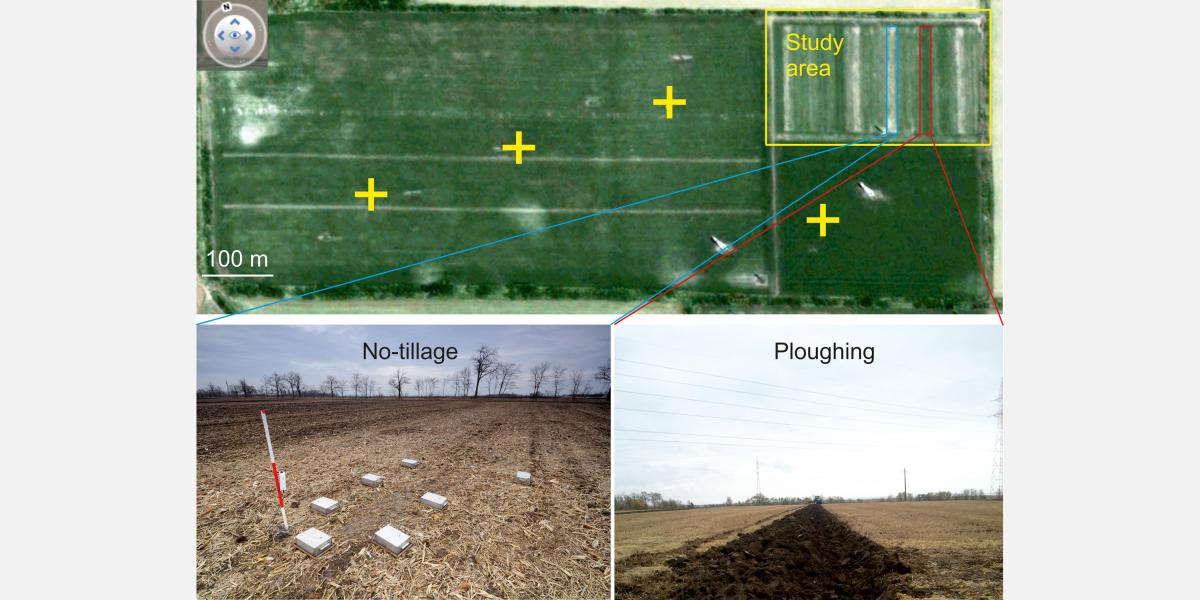Researchers at the Institute for Soil Sciences examined soil CO2 emission (soil respiration) and its main drivers (soil temperature, soil water content and plant activity) under field conditions. The project was carried out in cooperation with scientists of the Eötvös Loránd University and the Hungarian University of Agriculture and Life Sciences (MATE). The research comprised of five consecutive years – an exceptionally long period among similar studies – in a soil tillage experiment at the Józsefmajor Experimental and Demonstration Farm of MATE. The different soil tillage methods have been applied systematically for about 20 years on the plots, causing noticeable differences in certain soil properties in the least disturbed no-tillage compared to the inversion moldboard ploughing treatments. Different plant type was grown on the field in each year of the measurements, which enabled the results to also indicate differences or similarities between winter (wheat, rye, oat) and summer (maize, sunflower) plants.
Soil respiration varied greatly throughout the year due to temperature, moisture and plant activity changes, which can be described by the statistical models the researchers constructed. The measured soil respiration values also tended to be higher in the no-tillage treatment compared to moulboard ploughing. In their models soil respiration was predicted from soil temperature, soil water content and plant activity data. The results suggested that the consideration of plant activity highly improved model accuracy and is very important when estimating soil respiration. Especially in case of those winter plants that are harvested in early or mid-summer, soil temperature and water content factors alone fail to explain the drop in soil respiration due to harvest.
The results also revealed that remotely sensed vegetation index (NDVI) is a reliable option to represent plant activity in the model. To improve the suggested plant specific models, researchers urge the execution of long-term measurements of soil respiration under field conditions.
The study was published in Q1 journal Soil and Tillage Research:
Gy. Gelybó, Z. Barcza, M. Dencső, I. Potyó, I. Kása, Á. Horel, K. Pokovai, M. Birkás, A. Kern, R. Hollós, E. Tóth, Effect of tillage and crop type on soil respiration in a long-term field experiment on chernozem soil under temperate climate, Soil and Tillage Research, Volume 216, 2022, 105239, ISSN 0167-1987, https://doi.org/10.1016/j.still.2021.105239.

